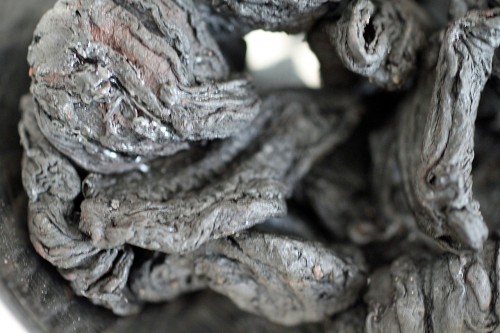Kodampuli or Malabar Tamarind
This week, I came across an ingredient that has quickly become one of my favorite new foods – a smoky, heady dried fruit that had my mind racing for different ways to use it! Although I tend to work on more of the modern dishes for Junoon, I decided to take a step back and focus on researching and developing a recipe for a traditional curry from the south of India, a Kerala shrimp curry. From my experience in Goa and in cooking Indian cuisine, I knew about kokum and tamarind as souring agents but had never heard about kodampuli, a smoked, dried fruit that’s used almost exclusively in the Kerala region.
Kodampuli is also called kudampuli, Malabar tamarind, gambooge or fish tamarind and is not actually tamarind at all as I first thought. The fruit is small, pumpkin-shaped and ripens from green to yellow. It’s grown in the south of India, other areas of southeast Asia and in part of Africa. Once the fruit ripens, it’s deseeded and dried in the sun after which it’s smoked. They have a really long shelf life, so if you happen to get your hands on this hard-to-find ingredient, you can keep it for literally years.
I was super excited to use this in the curry because I’m a bit obsessed with smokiness in foods (and cocktails), and I certainly had never tasted a smoky curry. To get the best out of the fruit, you have to rinse it and soak it in boiling water for about 10 to 15 minutes. Both the fruit and the liquid are used in cooking and impart a sour but not acidic (I finished it with grilled lime juice) quality to a dish. The flavor is not wholly unlike kokum or tamarind but there is a subtle, smoky finish; I think it added a delicious complexity.
You can be sure that I will be throwing these little guys in winter soups this season. Their flavor is best when simmered in a liquid for 10 to 15 minutes, so any braises I make (braising is one of my favorite cooking activities) may get a sour kick. I’d love to explore using these in sauces and meat marinades for searing or grilling – perhaps simmer it in wine or water with garlic and spices to do an overnight marinade or brine. Quite frankly, I’m just not sure how I’ll go back to regular tamarind again…


